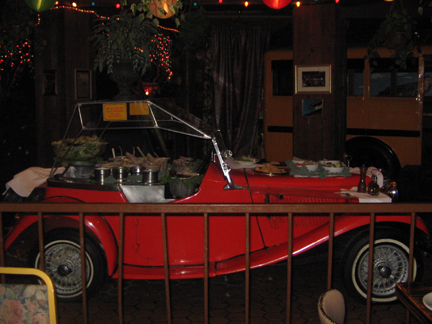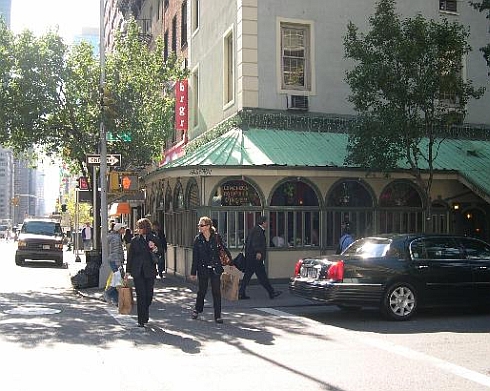Monthly Archives: October 2013
Chanel Bonfire Paperback!
Maxwell’s Plum
Opened in 1966 by Warner LeRoy whose grandfather was Harry Warner (one of the Warner Brothers) and whose father Mervyn was one of the most successful directors in Hollywood, directing everything from The Wizard of Oz (uncredited) to Quo Vadis and Mr. Roberts to, more germane to my life, Gypsy. Like his father’s film choices, Warner’s menu was all over the place from chili and burgers to wild boar and caviar. And like both sides of his show business family, LeRoy was a showman first and foremost, later taking his larger than life sensibilities to Tavern on the Green and The Russian Tea Room.
While I’m sure mother was keenly aware of “the scene” at the bar where Warren Beatty and Barbra Streisand and countless other hot, sexy young people were picking each other up, for Robbie and me, Maxwell’s Plum was a circus of stained glass, Tiffany lamps and large ceramic animals hanging from the ceiling that made it feel like a grown-ups restaurant for kids or a restaurant where grown-ups could act like kids.
Rumplemeyer’s and The Auto Pub
Schrafft’s and Serendipity
Isle of Capri
La Grenouille
http://www.vanityfair.com/culture/features/2008/09/grenouille200809
Ending at Annabel’s
Treasure of Las Flores del Vicio
After their success with “Summer House”, Mother and Marian Montgomery kept working together and wrote music and songs for Silvio Narizzano’s Las Flores del Vicio (released in the US as Bloodbath). It’s an insane phantasmagoria of sex and surreal indulgence set (and shot) in Spain that was locked up in a vault by the Spanish censors under General Franco. It’s kind of Bunuel meets Hammer Horror and stars Dennis Hopper at his craziest and most drugged out. Carrol Baker’s character, Treasure, sings Mother and Marian’s final song as she dies in a fountain at the end. It became a straight to drive-in and then video release in the US. in 1979 after the reels were finally freed. You can see a clip by clicking on the link.










